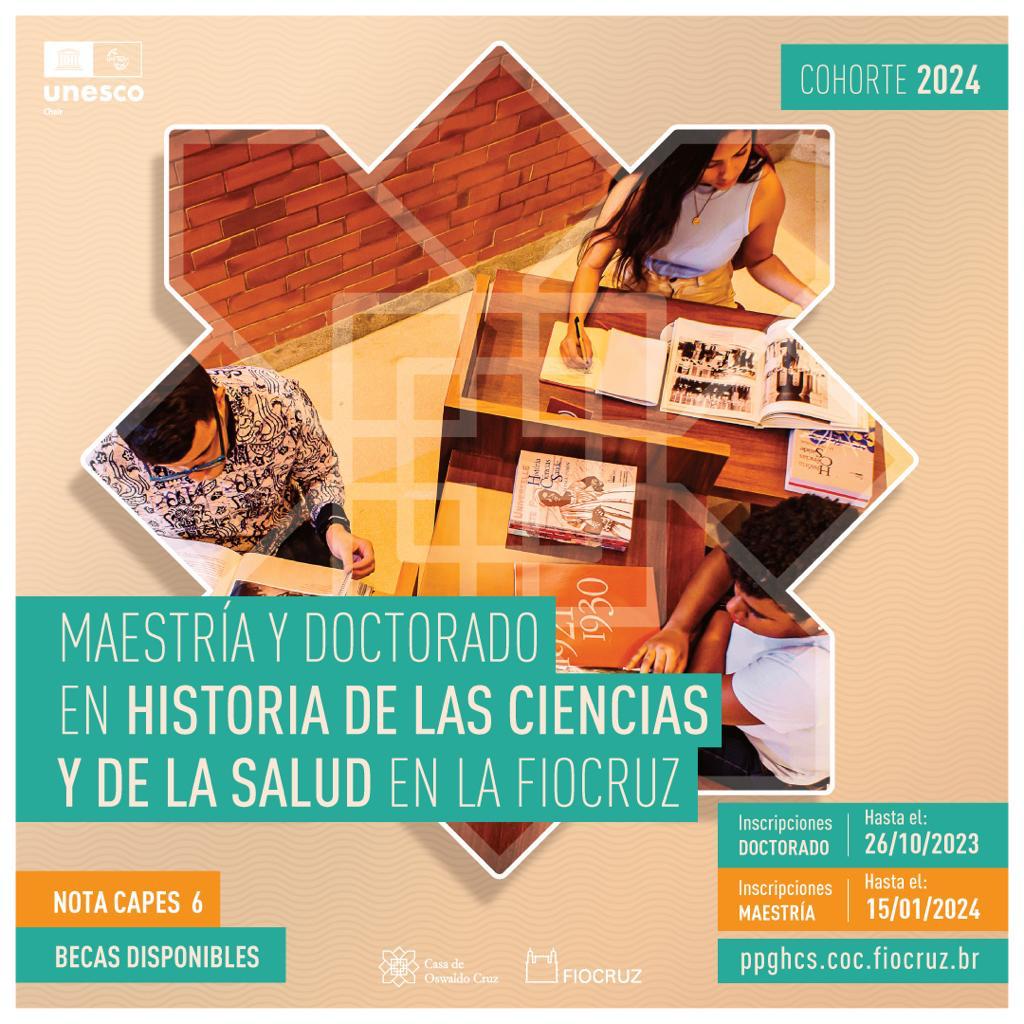June/2013
Interview with LUCIANE OURIQUES FERREIRA
By Jaime Benchimol and Marina Lemle

In her article “The emergence of traditional indigenous medicine in the public policy field” (in Port.), published in História, Ciências, Saúde – Manguinhos (vol. 20, no. 1, Jan./Mar. 2013), the anthropologist Luciane Ouriques Ferreira offers an insightful analysis of the redefinitions that were agreed upon by representatives of the government and of indigenous communities at meetings held in Acre in 2006, where physicians, midwives, pajés, and indigenous health agents representing a number of ethnic groups took part. While the last of these groups represents localized knowledge and practices that cannot be reduced to the measurement criteria adopted by academic medicine, the latter declares itself “scientific” and, as it enjoys a hegemonic position, it provides the underpinnings for public policies, even if it strives to interact with the brands of medicine that it labels “traditional.”
In this interview to the HCSM blog, Ferreira explains that traditional indigenous medicine can help expand healthcare service coverage for indigenous peoples living in hard-to-reach regions, while it can also contribute to the promotion of differentiated, integrated care. But to achieve this, healthcare providers must communicate inter-culturally and must work with indigenous communities to devise healthcare routines that blend knowledge and practices whose roots lie in distinct epistemological realms.
Over the past decade, midwives have earned a new status in public health policy. Has the role of pajés also changed? And how do indigenous healthcare agents fit into this context?
The international bodies of the United Nations have recognized the work of midwives, community agents, and traditional practitioners as a vital resource in primary health care ever since the Alma-Ata Conference in 1978. In Brazil, one of the guidelines of the National Policy on Health Care for Indigenous Peoples (Pnaspi), enacted in 2002, is to make official healthcare services and traditional indigenous health systems work together as a way of improving the situation of indigenous peoples and of enforcing their right to have differentiated access to health care.
According to the Pnaspi, Indigenous Health Agents should act as cultural brokers between healthcare teams and their community. However, these agents have been relegated to a secondary role within the organization of these services and it is not at all unusual for them to actually end up serving as representatives of biomedicine within their villages. So far, these socio-medical systems have only become truly blended in a few scattered places. Most of these systems employ an integrationist model that seeks to incorporate the knowledge, practices, and practitioners of indigenous medicine into the official healthcare system, so long as they are duly qualified and validated by modern science. Indigenous medicine is consequently instrumentalized and subordinated to the hegemonic medical model, which helps medicalize ever more intimate areas of indigenous community life. This has been the case with the training courses for traditional indigenous midwives that are occasionally offered by the government sectors that work with these populations.
Like pajés, traditional midwives do not conform to any universal standard among indigenous peoples. Each people has its own way of organizing care for women during pregnancy, delivery, and afterwards and of assigning responsibilities to each of the specialized or non-specialized caregivers who take part in ensuring the success of the project to produce a new person. This means we must be familiar with each indigenous community’s system for delivering gestational care so that initiatives to coordinate official healthcare services and indigenous medicine are tailored to the reality of each community, thereby helping guarantee that indigenous women enjoy a healthy pregnancy and safe delivery.
Two hundred years ago, practices that are called ‘traditional’ today – such as the practices of healers and midwives – were considered legitimate, as described by Tânia Salgado Pimenta, even within a system dominated by academic physicians. However, in subsequent decades, they broke this pact of peaceful coexistence and began to label such practices as charlatanism. You work with current dialogic contexts that suggest a certain equality. What is your assessment of experiences that incorporate pajés as assistants in hospital treatment in the Amazon?
Article 231 of the Constitution of 1988 granted indigenous peoples the right to maintain their languages, customs, and traditions and also lays the bases for respecting and recognizing the validity of the knowledge, practices, and practitioners of their socio-medical systems. So any discourse that describes indigenous practices and practitioners as “charlatanism” is giving voice to stereotypes and biases that still hold sway within the national imagination about traditional indigenous medicine.
The actual cases where pajés are used as assistants in hospital care in the Amazon are few and far between. In those cases where pajés are involved, they do not play the role of an assistant for the patient and his or her family but have an essential role in re-structuring the experience of suffering felt by the group involved in this medical event. The treatment provided by pajés is anchored in the same socio-cultural universe to which the patient and his or her support group belong; in other words, this treatment differs radically from the biologistic and technologistic approach offered by biomedically oriented healthcare services.
Since traditional therapies rely on locally situated explanatory models and care practices, they use specific ontological and cosmological explanatory models that are imbued with symbolic efficacy. This means that the treatments available through indigenous medicine and through official healthcare services are not considered antagonistic by indigenes but are instead used complementarily. The word ‘pajé’, which comes from Tupi, is used in regular discourse today, but it has taken on a generic connotation that fails to account for the diversity of indigenous socio-medical systems. Each and every indigenous people has its own specialists, with their own special designations, whose specific healthcare tasks depend upon the position they occupy within each community healthcare system (promotion, prevention, and recovery).
Furthermore, it is important to remember that the self-care practices conducted by the patient’s family group, including decisions about what specialist to turn to during the course of treatment, must also be taken into account when devising initiatives that will promote the integration of indigenous forms of medicine with official healthcare services at all levels of assistance, no matter how complex, as a way of ensuring that the groundwork is laid for implementing integrated health care for indigenous peoples.
In the interior of Brazil, especially in the Amazon, essential healthcare services are basically nonexistent. In these contexts, where healthcare services have not moved beyond campaign promises, what can you say about cooperation between the official healthcare system and the practitioners of traditional medicine?
Combining the work of official healthcare services with that of traditional indigenous medicine constitutes a very efficient resource when it comes to expanding healthcare service coverage for indigenous peoples living in hard-to-reach regions, while it also contributes to the promotion of differentiated, integrated care. But to achieve this, healthcare providers must become skilled in inter-cultural communication so that they can act in culturally differentiated contexts and work with the communities themselves to devise healthcare routines that combine knowledge and practices that have roots in distinct epistemological realms. The universities that have adopted the quota system have a valuable role to play in training human resources that are qualified to work in indigenous health care.
A document published by the WHO in 2002 encourages national states to regulate traditional medicine. You have deftly shown how indigenous medicine cannot be confined to the parameters that State medicine uses to judge its own procedures and knowledge. Is the Brazilian State ready to regulate this knowledge even though it knows little about the nosological and epidemiological reality of the regions and communities in question?
Perhaps the question here is less about evaluating the State’s ability to regulate indigenous medicine than about reflecting on the effects that this regulation would have on the socio-medical reality of indigenous peoples. We know that when public policies penetrate the context of indigenous villages, they tend to re-order the social relations between members of the community, and this includes interfering in the distribution of power within each socio-cultural organization. This means that regulating indigenous medicine would relegate to a marginal position – to oblivion – an entire set of knowledge, practices, and practitioners not validated by modern science, precisely because this set is anchored in epistemological worlds that differ from those underpinning the hegemonic medical model. Regulation thus ends up acting as a way of colonizing indigenous medicine by transforming it into a fantastical image of “sly civility,” to borrow Homi Bhabha’s expression. Indeed, we must still develop the skill to engage in dialogue and intercultural brokerage between medical systems, along with the ability to respect indigenous communities and work with them to devise strategies for addressing their healthcare challenges. Otherwise, we will be helping to perpetuate protectionist and integrationist ideologies that ignore indigenous peoples’ creative agency and hence their ability to build their own socio-medical reality.
Read more:
The emergence of traditional indigenous medicine in the public policy field (in Port.), article published in História, Ciências, Saúde – Manguinhos (vol. 20, no. 1, Jan./Mar. 2013)
Cover photograph: Informe Ensp – Indigenous peoples: an analysis based on the 2010 census








